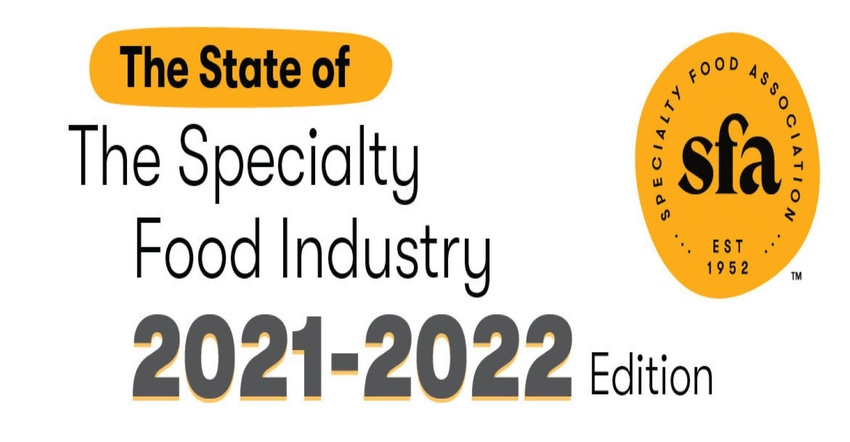Driven by the COVID-19 pandemic’s effect on buying, at-home meal preparation and consumption, specialty food sales soared to a record $170.4 billion in 2020, according to the Specialty Food Association’s (SFA) annual State of the Specialty Food industry report.

The report is an examination of market size and sales, dollar and unit sales growth, specialty food category penetration, growth forecasts in key categories, and 10-year tracking and forecasting in key categories.
All food sales, both specialty and non, grew much faster between 2018 and 2020; however, specialty food sales increased 24% at retail from 2018-2020, and 19.4% in 2020 alone. Categories related to cooking or baking at home soared, benefitting products like baking mixes, pasta and sauces, frozen entrées, and frozen and refrigerated meat, poultry and seafood.
Highest dollar growth
The top 10 categories with the highest dollar growth between 2018 and 2020 were frozen and refrigerated meat, poultry and seafood; cheese and plant-based cheese; chips, pretzels and snacks; bread and baked goods; non-ready-to-drink (RTD) coffee and hot cocoa; frozen desserts; refrigerated entrées; chocolate and other confectionery; frozen entrées, lunch and dinners; and shelf-stable condiments, dressings, marinades.
Top categories
The top 10 fastest-growing categories were seasonings; shelf-stable sauces, pasta and pizza; shelf-stable beans, grains and rice; frozen fruit and vegetables; refrigerated creams and creamers; refrigerated plant-based meat alternatives; refrigerated pasta, refrigerated RTD tea and coffee; tofu; and shelf-stable creams and creamers.
The COVID effect
The report highlighted five key insights and takeaways from COVID-19’s impact.
Center store rebirth. A year of home cooking has led to consumers rediscovering the usefulness and necessity of a home pantry.
Improving discovery. Combined with limited in-store sampling, fewer demos, and the decimation of foodservice, 2020 was a rough year for innovation discovery. This will be one of the key issues for the specialty industry in 2021 and beyond.
Specialty’s ecommerce visibility issue. Related to diminishing discovery, specialty is facing challenges with the growth of online shopping as it allows fewer opportunities for impulse buys.
Plant-based competition. The plant-based specialty food and beverage market grew 42 percent, nearly twice as fast as the entire specialty market. Much of the growth occurred in 2020 when surge shopping served as a gateway in some categories. But the plant-based sector is shifting as big CPG players innovate in the specialty space, with massive funding and scale, and non-specialty ingredients.
Channel shifting. Almost every online e-grocery market saw phenomenal growth in 2020, while drug stores gained new customers by adding grab-and-go and refrigerated aisles. Dollar stores continued pulling people from all other channels, and in 2021 are projected to account for 50 percent of all newly opened stores. Consumers shopped in stores for groceries that they may have rarely visited much in prior years.
About the Author(s)
You May Also Like






